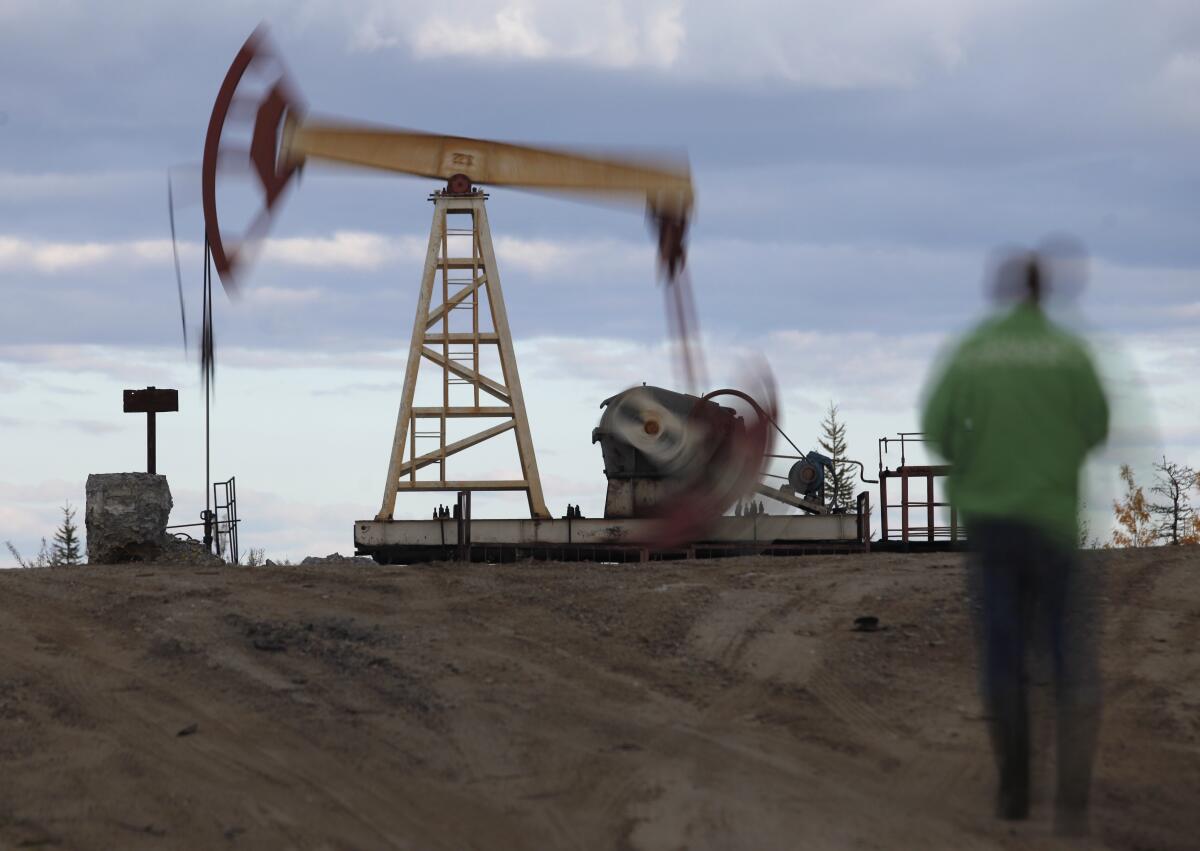Op-Ed: Put a price cap on Russian oil while the EU hammers out an embargo

- Share via
A European Union embargo of Russian oil is on the table, and the indications are that all 27 member countries may soon agree to a phased-in version. But there is a serious unintended consequence in the EU’s approach: Promising to gradually curtail future Russian energy exports to the EU raises uncertainty about future supply and boosts the price of oil now.
This explains why the price of the Brent crude benchmark rose nearly 10% over the past 10 days. With oil export volumes currently unchanged, the EU’s announced plans could well increase Putin’s oil revenues at a crucial time for the war in Ukraine.
Fortunately, there is a fix. The EU can form a coalition with other countries willing to agree to immediately pay no more than a fixed amount in dollars per barrel received by Russian oil exporters.
In early 2020, when the average price of oil fell to $20 per barrel, Russia was happy to supply as much as it does today with the world price currently over $110 per barrel. This is because the cost of producing and distributing Russian oil is low — no more than $10 per barrel for mature fields. Any price above that generates pure profit, much of which is now used directly to fund Putin’s war machine.
As a concrete example, assume the EU+ coalition sets the price cap at $10 per barrel of Russian oil, effective Wednesday, as it transitions to zero Russian imports. What would happen?
First, the Russians would look for other customers. In 2021, the European Union, other European countries, the U.S., Japan, and South Korea purchased about two-thirds of Russia’s crude and petroleum product exports — which amounts to around 5 million barrels per day. Coincidentally, India consumes about 5 million barrels of oil per day. As a hypothetical example, assume India would decline to join the EU+ coalition and instead indicates a willingness to replace Europe as Russia’s No. 1 customer. But what price would India or any other non-coalition country, such as China, be willing to pay?
There is great stigma attached to buying Russian oil, which finances appalling war crimes, as well as the threat of additional sanctions down the road as more atrocities become public. India should negotiate for a price that is lower than the world price and above the EU+ price cap. Let’s say they split the difference and agree to pay $50.
Russia then has another problem — how to get the oil and refined product to India. There is no pipeline, so everything would need to go by ship. However, the EU and its close allies control the world’s largest tanker fleets, as well as the insurance and other financial services needed to move oil. For Russia to build its own maritime transport infrastructure would be enormously expensive and time-consuming; to do this fast enough to handle 5 million barrels per day next week or next month is essentially impossible.
The EU could therefore use its market power to charge a stiff handling fee per barrel moved to Asia using its infrastructure. European ships could still carry the oil, but only upon Russian payment of a fee per voyage that is set to ensure the net price to Russia is not more than $10 per barrel. (These are big ships, visible from space; smuggling 5 million barrels per day or anything close to that is not feasible.)
In this scenario, India buys 5 million barrels of oil from Russia and Europe buys its 5 million barrels from suppliers who previously sold to India. India pays $50 per barrel, Europe pays the world price and Russia receives $10 per barrel, dramatically reducing the huge oil profits Putin has been using to fund his war machine.
Facing a net revenue of $10 per barrel from both EU+ and non-coalition countries, Russia could refuse to sell oil to the world, but its onshore storage is already full, so any export reduction would mean oil wells need to be shut down. In some older oil fields, this would lead to immediate and permanent decline in productive capacity, particularly as Russia is cut off from advanced drilling technology for the foreseeable future.
From an economic point of view, the most likely outcome is that Russian oil exports continue at or close to their current level, which means that the world price of oil — determined by the balance of supply and demand at the global level — would not move significantly.
Still, since the supply of Russian oil is likely determined by politics as much as economics, Putin could decide to strategically cut off oil exports. Such a move would lower his export volumes substantially. But under the EU+ price cap, whether he decides to keep exporting or not, Putin’s war revenue would be diminished.
What if the world price of oil goes up because Russia cuts its exports? In that case the EU+ coalition still pays $10 per barrel of Russian oil and the handling fee on using EU-based shipping services rises, so that Russia still earns no more than $10 per barrel on shipments to non-coalition countries.
This price cap scheme could run alongside the phase-in of a full EU embargo. If the coalition involves non-EU countries, this arrangement will guarantee that Putin receives less money for his oil even after the EU ban kicks in.
Simon Johnson is a professor at MIT Sloan and former chief economist at the International Monetary Fund. Łukasz Rachel is a research fellow at Princeton University.
More to Read
A cure for the common opinion
Get thought-provoking perspectives with our weekly newsletter.
You may occasionally receive promotional content from the Los Angeles Times.










